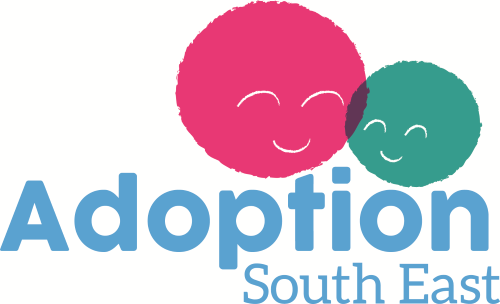All children adopted from care are now eligible for Pupil Premium Plus worth £1900 per year. The Pupil Premium is paid directly to schools and is to help schools raise the attainment of disadvantaged pupils and close the gap with their peers.
While the Pupil Premium was originally only for children adopted since 2005, this has now been extended to include all adopted children from Reception to Year 11. The Government has extended the coverage of the Pupil Premium in recognition of the traumatic experiences many adopted children have endured in their early lives and a realisation that their needs do not change overnight.
To allow your child’s school to claim the Pupil Premium, you will need to tell the school about your child and provide supporting evidence – for example, show the school the original Adoption (Court) Order. If you have not been contacted by your child’s school, please approach them and ask for your child’s adoptive status to be included on the next school census. This will then trigger the payment of the Pupil Premium to the school.
Once your child has been registered for the Pupil Premium, we recommend that you ask for a meeting with the school to discuss how the additional funding should be spent. While the school can make the final decision, good practice would be that this decision is made together with you as adoptive parents.
For advice and guidance on support for eligible children in school contact the Adoption UK helpline between 10am and 4pm Monday to Friday on 0844 848 7900.
Frequently Asked Questions
What is the Pupil Premium?
Pupil Premium is additional funding given to schools in England to tackle disadvantage and close the attainment gap between eligible pupils and their peers.
What are the eligibility criteria?
From academic year 2014/15, state maintained schools (funded by the local education authority) and non-maintained special schools (not funded by the local education authority) will attract the Pupil Premium for children that were:
(Pupils will be referred to as children adopted from care and post-LAC (for SGO/RO) throughout the remainder of this document.)
Why are children adopted from care and those who leave care under a Special Guardianship or Residential Order eligible for Pupil Premium?
All adopted children have experienced loss and many experienced trauma in their early lives. 70 per cent of those adopted in 2009-10 entered care due to abuse or neglect. Adoption offers bright futures for children from care, but it does not erase their past.
80 per cent of adopters in our research said their child needs more support than their peers and nearly two thirds of parents (59 per cent) said their child is always trying to catch up in school and make up for their early life experiences.
Adopted children's early experiences can have a lasting impact, particularly at school. Therefore teachers and schools have a vital role to play in helping these children emotionally, socially and educationally by providing specific support to raise their attainment and address their wider needs.
- adopted from care in England (including those adopted before December 2005);
- that left care under a Special Guardianship Order (under the Children Act 1989);
- that left care under a Residential Order (under the Children Act 1989)
- are in Reception to Year 11;
- where the parent self-declares their child’s status to the school, providing supporting evidence (e.g. Adoption Order); and
- where the school records on the School Census that it has a child on roll who meets the above criteria
How will children adopted from care and post-LAC access the pupil premium?
Funding is paid directly to schools for schools to use. Parents and guardians need to self-declare their child’s status to the school where their child is on roll.
Parents and guardians are required to provide evidence to the school, for example their Adoption Order or a letter from the local authority that originally looked after the child.
The school will use this evidence to record the child's status on the school census. Once schools have declared a child's eligibility on the school census, they can access Pupil Premium funding.
How do I present sensitive information when declaring to schools?
Information detailed on an Adoption Order is sensitive and includes information you may not want to share with your child's school. Parents can photocopy the child's Adoption Order and hide information about birth parents before they present it to schools.
The crucial information which needs to be visible is the child's name (since they were adopted) and the name of the agency they were originally adopted from.
When is the self-declaration deadline?
In order for schools to receive funding children need to be recorded as eligible on the school census.
Schools will not necessarily be aware that they have adopted children and post-LAC on roll. We therefore encourage parents and guardians to present their child's information, rather than rely on the school to approach them.
Will parents and guardians need to self-declare again? If so, when?
Parents and guardians will need to self-declare again if their child moves school. If the child does not change schools they will continue to attract Pupil Premium funding.
Parents and guardians will need to ensure that they self-declare to their child's new school by the January school census date prior to their child's move. This will ensure schools are able to access funding from the child's start date.
How much funding will each school receive?
The Pupil Premium is £1900 per eligible child, per year.
How is funding paid?
Funding is paid directly to schools.
When will schools receive the Pupil Premium funding?
Funding is paid to local authorities and or schools on a quarterly basis. For children registered for Pupil Premium before July 2014 schools are already registered to receive for funding for academic year 2014/15.
In July 2014 the Pupil Premium was extended to all children adopted from care in England. For these children, schools will be able to receive funding for academic year 2014/15 retrospectively, once children have been declared as eligible on the school census.
What school types attract the Pupil Premium for children adopted from care/post-LAC?
Mainstream schools and non-maintained special schools
My child is in school post-16, will they receive Pupil Premium?
No. The Pupil Premium is additional funding for schools from reception to Year 11. Funding for post-16 education is outside of the Pupil Premium.
Is the funding ring-fenced for each child?
No. Funding is not ring-fenced and schools can pool Pupil Premium money for several children to pay for collective support to gain maximum impact from the funding.
The Pupil Premium is additional money for schools to improve the educational and personal outcomes of disadvantaged pupils including those who have been adopted from care. It is not intended that the additional funding should be used to back-fill the general school budget nor that the funding should be used to support other groups of pupils.
Schools are inspected by Ofsted on their effective use of Pupil Premium funding.

